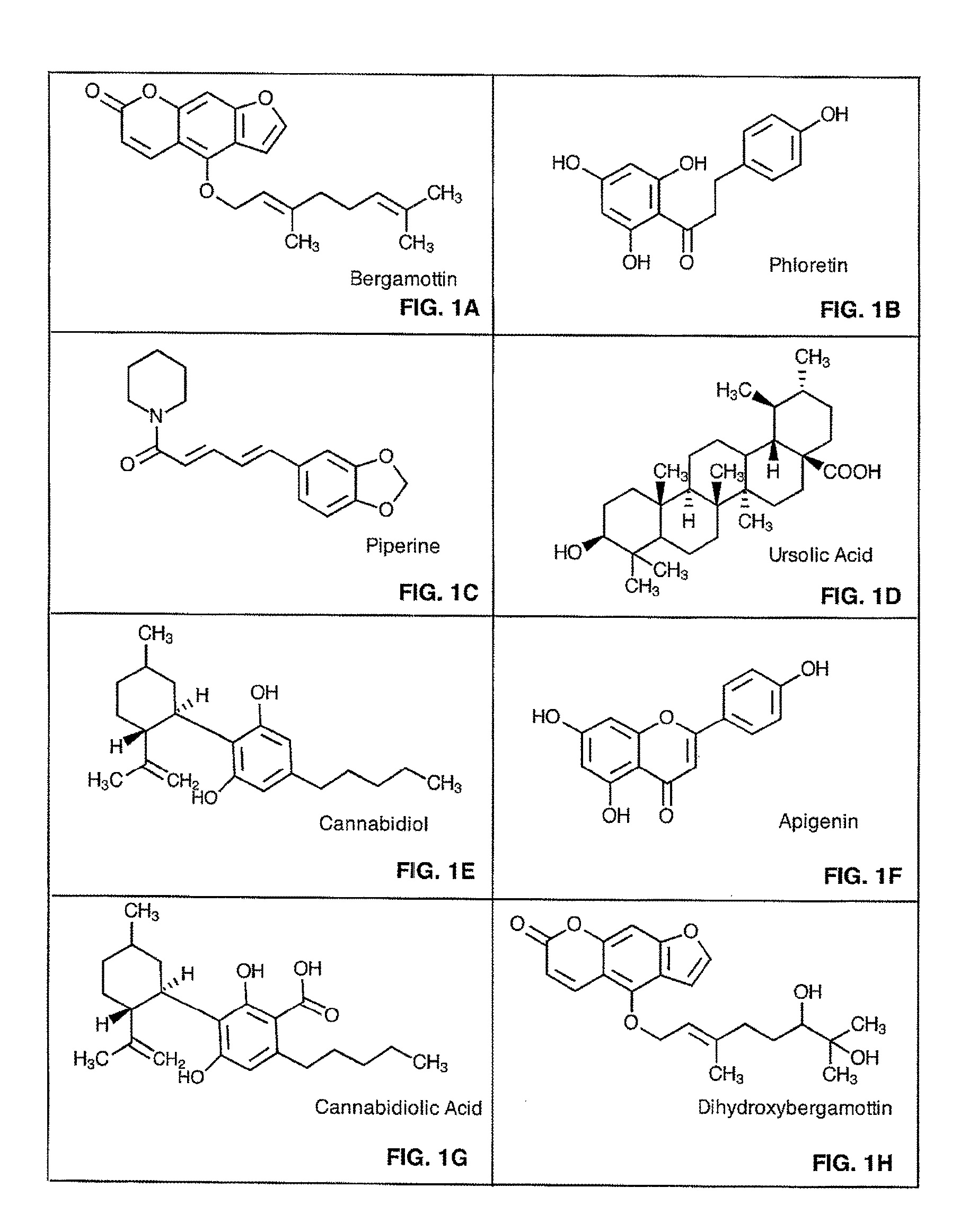U.S. Patent No. 10,279,000 B1 (‘000) issued on May 7, 2019, for “Method for Treating Cannabis Induced Anxiety.” It was issued to inventor Mark Hetherington, of Saskatoon, Canada and Jason Green, of Birch Hills, Canada. The applicantassignee is Canopy Growth Corporation, of Smith Falls, Canada. The specification discloses several embodiments focused around treatment of anxiety caused by cannabis usage, focused around the following composition:
a) Cannabidiol (CBD) or cannabidiolic acid (CBDA);
b) Bergamottin or dihydroxibergamottin;
c) Piperine;
d) apigenin or an apigenin glycoside; and
e) ursolic acid.
Bergamottin is a chemical compound commonly found in grapefruit juice and is used commonly in pharmaceutical metabolic interactions. Ursolic acid is a molecule found in apple peels. Phloretin is found in apple tree leaves and is a phenol, derivatives of which are commonly used in skin topicals. The single claim is directed to the method of treatment of cannabis-induced anxiety consisting essentially of CBD, Valerian extract, and one of bergamottin or dihydroxybergamottin, phloretin or phloretin glycoside, piperine, apigenin or apigenin glycoside, and ursolic acid.
Figure 1A-1H are chemical structures for the various compounds in the claimed composition.

The Cooperative Patent Classifications are A61K (preparations for medical, dental, or toilet purposes, namely, (36/00); medicinal preparations of undetermined constitution containing material from algae, lichens, fungi or plants, e.g., traditional herbal medicines, like magnoliopsida (36/185); medicinal preparations characterized by non-active ingredients, e.g., carriers or inert additives, namely heterocyclic compounds, e.g., ascorbic acid, tocopherol or pyrrolidones (47/22); and condensed carbocyclic rings, e.g., cannabinols (31/352)); and A61P (specific therapeutic activity of chemical compounds or medicinal preparations, namely, drugs for disorders of the nervous system, specifically anxiolytics (25/22)).
Please contact Yonaxis for more information on any of the IP processes described in this posting if you have any questions.
